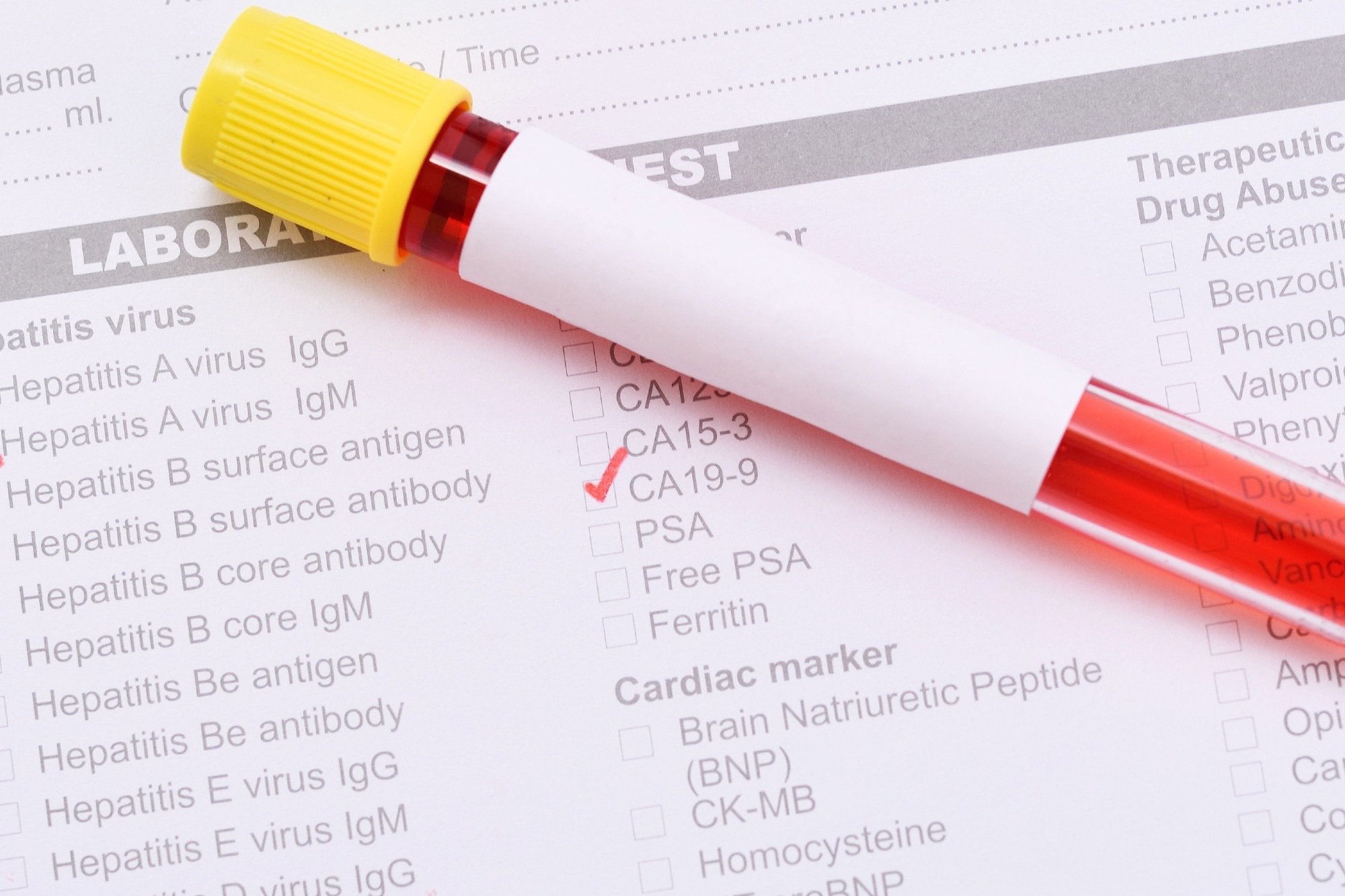In a current examine printed within the journal , researchers illustrated that sure biomarkers could also be higher predictors of coronavirus illness 2019 (COVID-19) than others.
Biomarkers corresponding to platelet (PLT) and eosinophil (EOS) depend appeared to foretell COVID-19 severity higher than neutrophil-lymphocyte (NLR) and platelet-lymphocyte ratios (PLR).
Background
COVID-19 infections have a extremely variable medical spectrum starting from delicate to extreme sickness. This has prompted researchers to hunt biomarkers that function early warning alerts for doubtlessly extreme circumstances.
Widespread biomarkers embody C-reactive protein (CRP) and full blood cell depend (CBC) parameters, that are laboratory analysis requirements and could also be extra helpful in predicting illness development.
Gentle circumstances have lesser ranges of CRP, neutrophil (NEU) depend, aspartate aminotransferase, creatinine, lactate dehydrogenase (LDH), degree, and proinflammatory cytokines. Crucial COVID-19 circumstances are characterised by elevated ranges of CRP, ferritin, interleukins, lymphocyte (LY), eosinophil (EOS), and platelet (PLT) counts, whereas LY and monocyte counts lower.
The NLR is essentially the most generally used prognostic biomarker in infectious illnesses, however its values are depending on age, gender, comorbidities, and particular medicine. Corticosteroid remedy might lead to a rise in white blood cell (WBC) depend accompanied by excessive NEU and low LY, EOS, and basophil (BAS).
This raised issues about whether or not COVID-19-positive sufferers had been receiving corticosteroid remedy and the dosing routine utilized in many research. The current examine examines whether or not baseline biomarkers and CRP ranges can predict the event of pneumonia and the necessity for hospitalization with oxygen remedy previous to remedy interference.
Concerning the examine
The present investigation included 200 COVID-19 ambulance sufferers from the Novi Unhappy Well being Centre who denied medicine use previous to blood pattern evaluation. Members ranged in age from 20 to 81 and exhibited respiratory an infection signs.
They had been included in the event that they examined constructive for extreme acute respiratory syndrome coronavirus 2 (SARS-CoV-2) or visited the COVID-19 ambulance inside seven days of experiencing signs. Members within the examine additionally underwent a bodily examination, Saturation of Peripheral Oxygen (SpO2) testing, laboratory evaluation (CBC and CRP on the identical day), and a chest X-ray.
All hospitalized sufferers had a SpO2 beneath 94% in room air, a respiratory fee better than 30 breaths per minute, and radiographic proof of pneumonia, rendering them gravely ailing. Utilizing Statistical Package deal for the Social Sciences (SPSS 23.0), chi-square, and Mann-Whitney U assessments, the info had been analyzed for group comparability.
A p-value of <0.05 was decided to be statistically important. Utilizing binary logistic regression, pneumonia, and hospitalization had been independently predicted, and the issue with the perfect univariate outcomes was chosen for multivariate evaluation. Space Underneath the Curve (AUC) and receiver working attribute (ROC) curves had been calculated for variables with statistical significance.
Outcomes
The contributors had been divided into two cohorts based mostly on the presence or absence of pneumonia, spanning a large age vary from 20 to 81 years. The analysis was primarily influenced by the prevalence of pneumonia and the need of oxygen remedy in healthcare services.
The examine noticed that these recognized with pneumonia displayed decreased ranges of EOS and PLT, together with elevated age teams, CRP, and NEU counts, compared to people with out pneumonia. No obvious correlation between gender and pneumonia was noticed.
A multivariate logistic regression evaluation discovered that pneumonia was strongly predicted by age, CRP, and EOS depend. There have been no important variations noticed within the counts of different blood cells or computed ratios between pneumonia sufferers who had been hospitalized and those that weren’t. Nonetheless, there have been notable variations within the ranges of plasma CRP, PLT, and EOS. The outcomes of the chi-square take a look at didn’t point out a statistically important affiliation between gender and hospitalization.
Even though PLT counts in hospitalized sufferers remained inside the regular vary, the usage of linear regression evaluation revealed that this specific characteristic independently predicts the probability of hospitalization. The cut-off worth of 180 x 109/L was decided based mostly on an analysis of the ROC curve, with a sensitivity of 60% and a specificity of 58%.
Conclusion
To conclude, the examine findings confirmed that biomarkers like PLT and EOS depend predict COVID-19 severity higher than widespread biomarkers corresponding to NLR and PLR.
Though biomarkers like CRP and CBC parameters can predict extreme COVID-19 and hospitalization necessities, the authors consider that the utilization of a single parameter to foretell illness severity could also be more practical as a result of the evaluation of sufferers calls for {that a} doctor make fast choices.
Moreover, making a method to estimate the probability {that a} affected person might develop extreme COVID-19 might be useful, however it might want to contemplate a number of elements, corresponding to affected person age, comorbidities, intercourse, and ethnicity.
